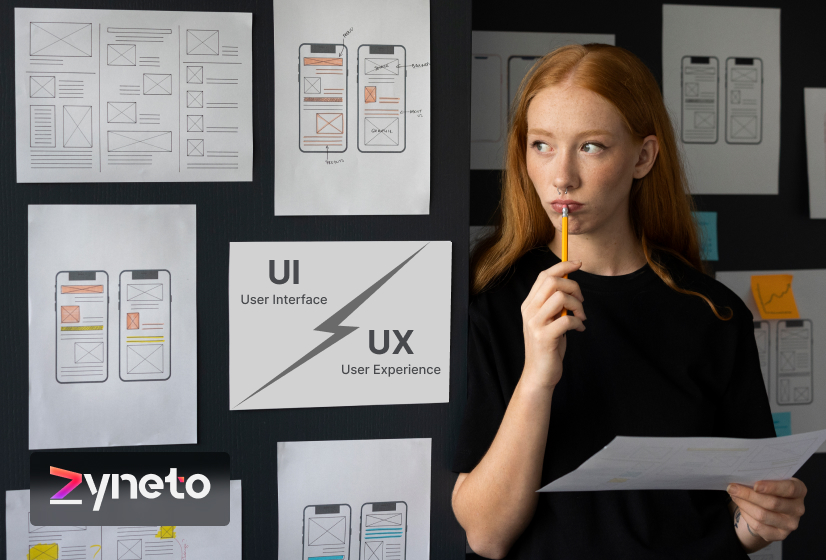What is the Difference Between UI and UX Design? Get the Facts Right


Many people find it difficult to differentiate between product design, user experience design (UX), and user interface design (UI). Are you one of these persons? Not to worry, our experts will explain briefly the difference between these terms and how their importance in product design. Let's review the purpose and roles of each.
To begin to clear up the mystery, let's review the differences between user experience (UX) and user interface (UI). Although UX and UI are often used interchangeably, like UX/UI, they mean very different but close things. To clarify 'what does a UI UX designer do,' it is essential to understand that UX design refers to the user experience, while UI design refers to the user interface.
UX design refers to “user experience,” while UI stands for “user interface design.” Both elements are crucial for a product and work closely together. However, despite their professional relationship, the roles are quite different, referring to aspects of the product development process and the design discipline.
User experience design (UX) is the process of designing products for specific user demographics. To understand 'why is user experience important? ' It is crucial to recognize that UX design encompasses every interaction between a customer or user and a company or product, regardless of the medium.
User experience design considers all the different elements that shape this experience. A UX designer thinks about how the experience makes it easy for the user to accomplish the tasks they want to accomplish.
For example: How simple is the payment process when purchasing from an online store? The ultimate purpose of UX design is to create easy, efficient, relevant, and enjoyable user experiences.
User experience (UX) is the sum of tasks focused on optimizing a product so that its use is effective and pleasant. The user interface's (UI) design is its complement: the appearance, presentation, and interactivity.
To answer the question, 'What does a UI designer do?' The goal of user interface (UI) design is to guide the user visually through a product's interface. All visual components must be consistent, coherent, and aesthetically pleasing.
Unlike UX, user interface design is purely digital. It considers all the visual and interactive elements of a product's interface, such as buttons, icons, spacing, typography, colors, images, etc.
Now that we have cleared up the mystery of UX and UI, let's look at the differences between product design and user experience design. Aren't products designed for a good user experience? Let’s see!
Product design encompasses all design tasks, balancing design metrics with product objectives, such as maximizing ROI and time-to-market opportunities.
User experience (UX) design focuses on the customer and how users will interact with each product process. In contrast, product design analyzes the design from a global perspective and with a perspective aligned with the company's objectives, but without going into detail on tasks such as user testing, etc.
The fundamental role of product design is to fine-tune the usability and accessibility of the product to the end customer. The UX participates in the product design process from research to ideation but will be oriented towards the customer, studying the target market.
Although UX and product design overlap, there are notable differences between them. You'll hear a UX designer asking questions like, is the product easy to use? How can I make the product design user-friendly? Or what are some of the aspects that the client will not like?
On the other hand, a product designer will ask if the product has a place in the current market. How can the design be profitable? Or what are some of the things about design that can be counterproductive in the market?
Here, we summarize the differences between these three design terms.

The fundamental differences between UI, UX, and Product Design focus on the objective of each design, which is complementary to each other, of course. While the UX designer thinks about usability, the UI designer organizes the interface, and the product designer worries about the design process, business, branding, and cost.
But as we all know, in all professions, skills go hand in hand with responsibilities and challenges. Many of Zyneto’s professional designers have demonstrated superb skills in designing products and developing the UX and UI.
Are you still confused, or do you have a UX/UI design project you’ll need help with? Please contact us to discuss it!

Vikas Choudhry is a visionary tech entrepreneur revolutionizing Generative AI solutions alongside web development and API integrations. With over 10+ years in software engineering, he drives scalable GenAI applications for e-commerce, fintech, and digital marketing, emphasizing custom AI agents and RAG systems for intelligent automation. An expert in MERN Stack, Python, JavaScript, and SQL, Vikas has led projects that integrate GenAI for advanced data processing, predictive analytics, and personalized content generation. Deeply passionate about AI-driven innovation, he explores emerging trends in multimodal AI, synthetic data creation, and enterprise copilots while mentoring aspiring engineers in cutting-edge AI development. When not building transformative GenAI applications, Vikas networks on LinkedIn and researches emerging tech for business growth. Connect with him for insights on GenAI-powered transformation and startup strategies.
Share your details and we will talk soon.
Be the first to access expert strategies, actionable tips, and cutting-edge trends shaping the digital world. No fluff - just practical insights delivered straight to your inbox.